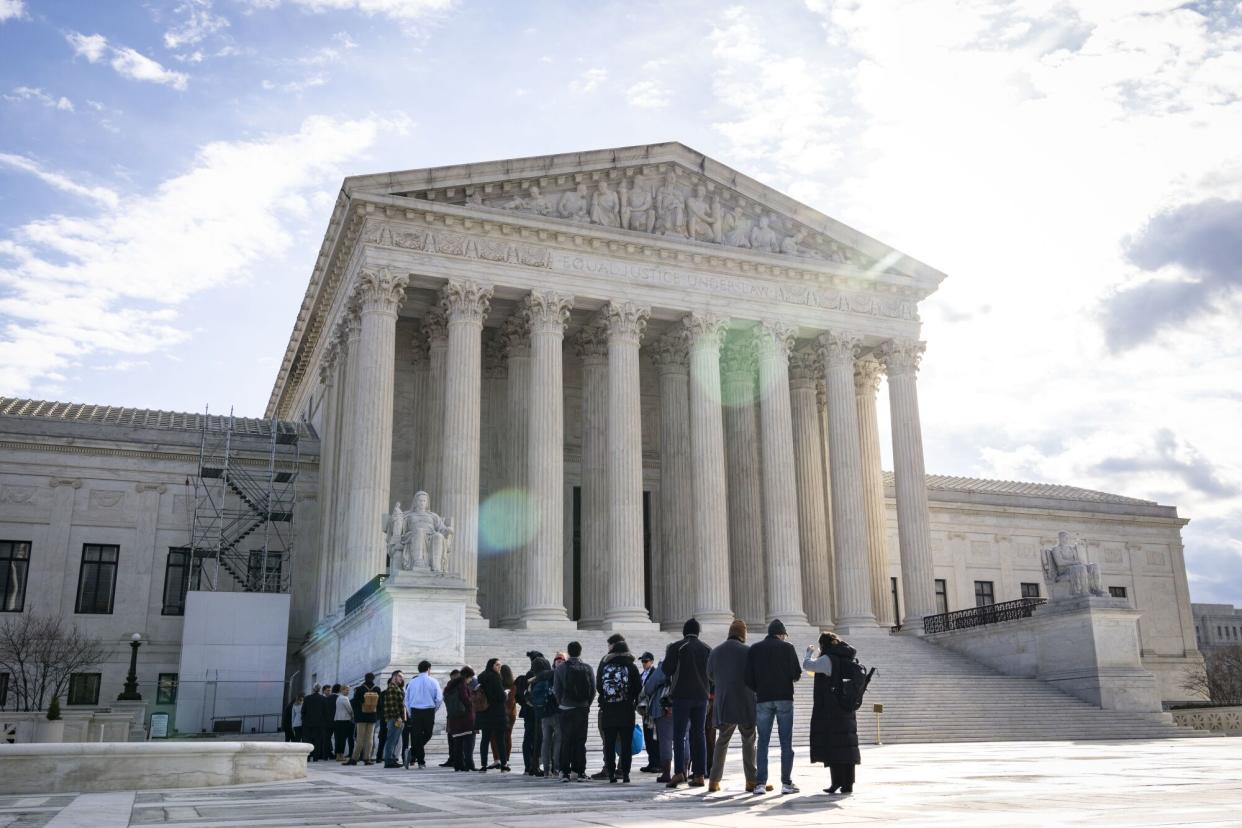The Supreme Court Just Complicated Employer Diversity Initiatives

(Bloomberg) -- The US Supreme Court’s ruling that a St. Louis police sergeant can sue over a job transfer she claims was discriminatory was championed by human rights groups as “an enormous win for workers.”
Most Read from Bloomberg
Record Rainfall in Dubai? Blame Climate Change, Not Cloud Seeding
Oil Erases Advance After Iranian Media Downplays Israel’s Attack
However, hours after the decision Wednesday, lawyers were warning that the outcome could have a chilling effect on employers’ diversity initiatives because it adds to questions about what’s legal.
Jatonya Clayborn Muldrow sued the City of St. Louis after she was reassigned from the department’s intelligence division on public-corruption and human-trafficking cases to a job in the city’s Fifth District. Though she was paid the same, she said she had to start working weekends, had less prestigious assignments and lost access to high-profile people. In short, she argued, the transfer was negative for her, and it was made on the basis of sex.
Workplace discrimination due to sex or other protected characteristics — like race, color, religion or national origin — is illegal, but courts across the country have disagreed about how substantial the unequal treatment must be to merit a legal claim. In this case, the city argued that Muldrow’s lateral move at the same pay grade wasn’t significantly harmful enough to meet the standard.
The Supreme Court disagreed, saying an employee just needed to show “some harm” under the terms of their employment, but it doesn’t need to be “material,” “substantial” or “serious.” The decision makes it easier for workers to sue over discriminatory job transfers.
Some employment lawyers say the same reasoning could be carried over to workplace development programs or employee resource groups designed to benefit traditionally underrepresented cohorts: for example, a fellowship that only accepts Hispanic students or a leadership program only open to women.
“Could you say that exclusion from participation in an mentoring or leadership program materially disadvantages someone?” said Jonathan Segal, a partner specializing in employment and labor law at Duane Morris. Even before the opinion, Segal was advising companies to eschew development programs that only allow people of protected groups to participate, he said. Now, he says, “the risk is even higher.”
‘An Opening’
The Supreme Court’s decision to overturn affirmative action in college admissions last year prompted executives across the country to reexamine their diversity, equity and inclusion, or DEI programs. At the same time, conservative legal groups refocused their attentions on corporations, arguing that some initiatives meant to benefit marginalized groups amount to reverse discrimination.
Though the racial justice group Legal Defense Fund praised the ruling, Senior Economic Justice Counsel Pilar Whitaker acknowledged opponents of DEI programs likely “will see this as an opening” to launch new attacks on diversity programs.
She’s among lawyers who believe that anyone seeking to sue for being excluded from a program will face steep hurdles in proving that being left out hurts them.
“The Court reaffirmed that challengers must establish harm or injury in a term or condition of employment,” said Lauren Hartz, co-chair of the DEI Protection Task force at law firm Jenner & Block. In her view, that won’t be easy to prove, but will still open the door to more lawsuits. Her firm is advising companies to carefully document changes to employee schedules, perks and assignments to ensure that they can later show the moves weren’t discriminatory.
The ruling is a “double-edged sword,” says David Glasgow, executive director for the Meltzer Center, which studies DEI law at New York University. “It may become a bit easier to challenge DEI programs, but it will also be a bit easier to bring traditional discrimination claims,” such as the one Muldrow brought against St. Louis.
Most Read from Bloomberg Businessweek
What Really Happens When You Trade In an iPhone at the Apple Store
Rents Are the Fed’s ‘Biggest Stumbling Block’ in Taming US Inflation
Aging Copper Mines Are Turning Into Money Pits Despite Demand
©2024 Bloomberg L.P.


